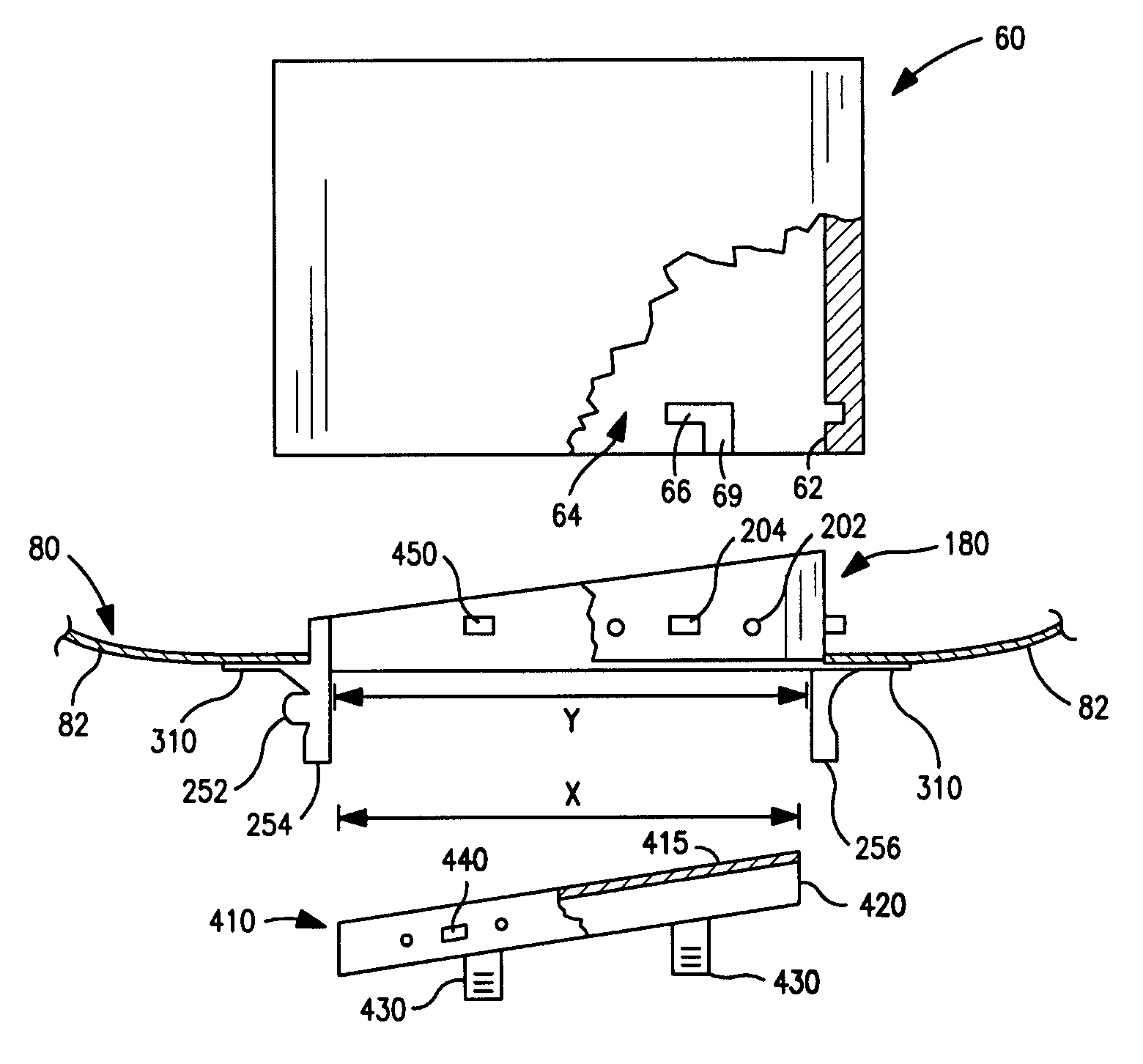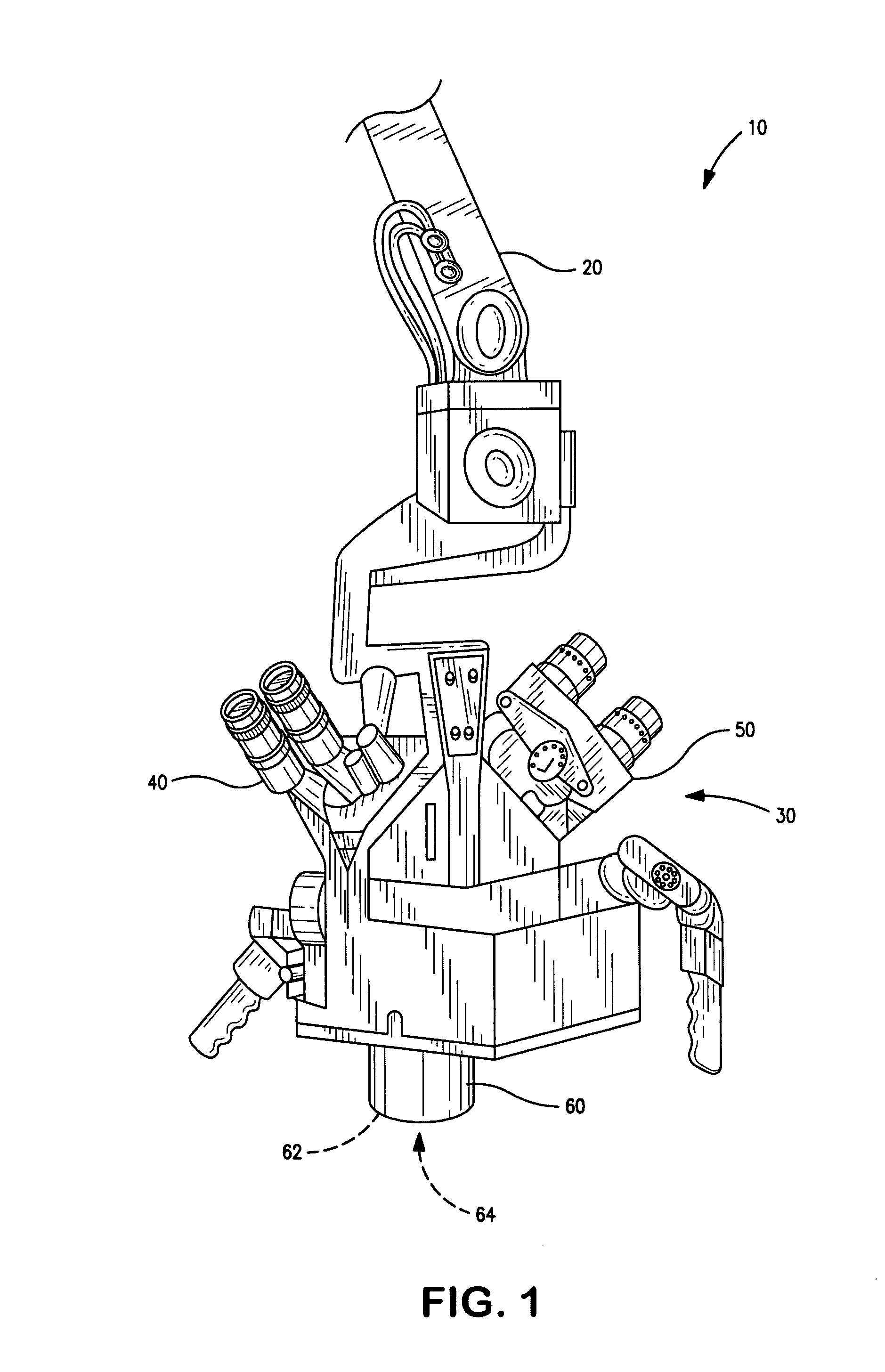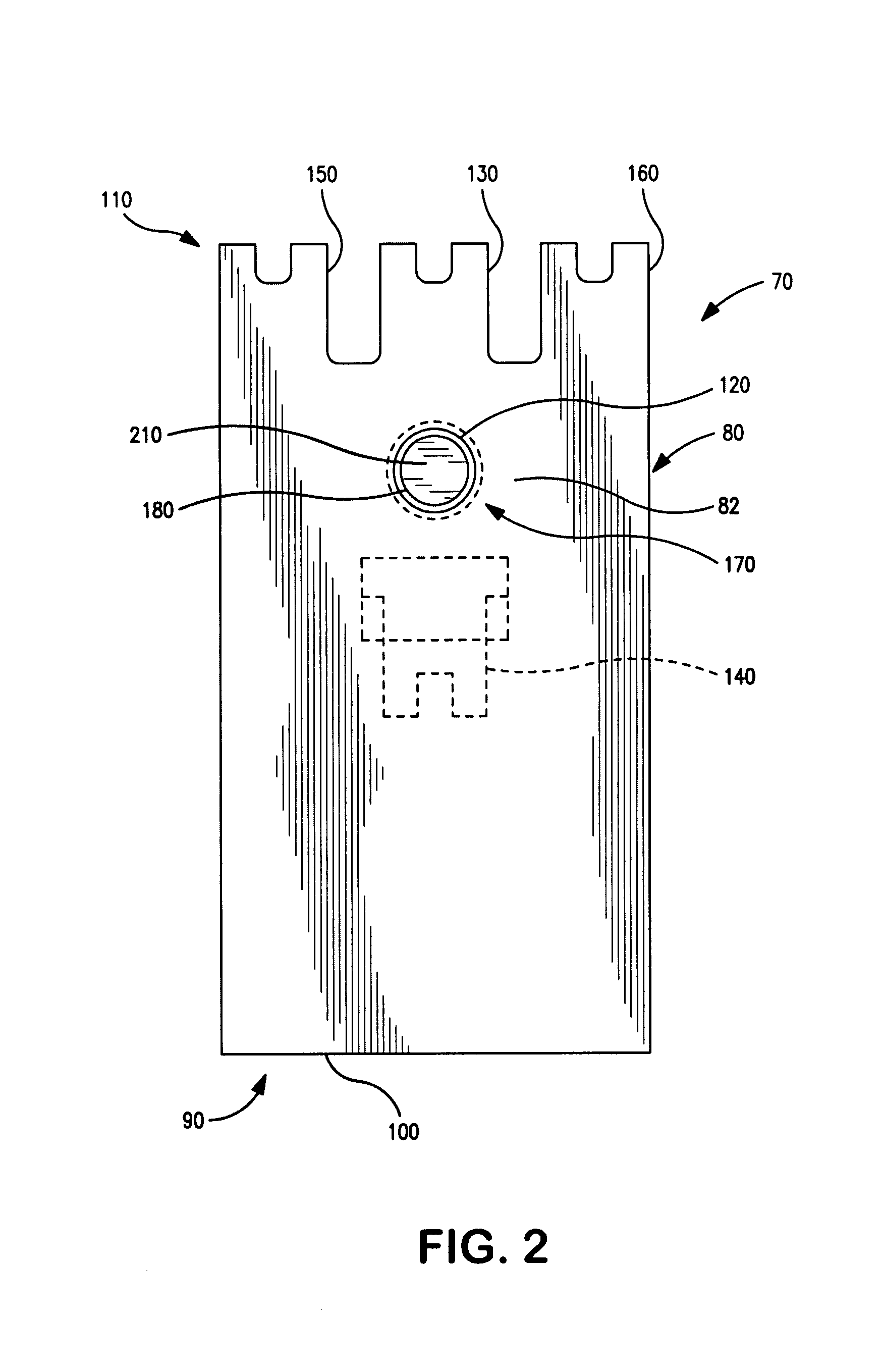However, during an operation, the area around the surgical site must remain sterile.
As it is difficult or impossible to sterilize the surgical microscope, it is common practice to cover the microscope with a sterile drape.
However, various disadvantages have been realized in trying to adapt sterile drapes to surgical microscopes.
Although such drapes have proven sufficient for use with microscopes configured for cranial operations, with the three ocular pockets accommodating the up to three ocular ports located on one side of a microscope, they prove insufficient during cranial operations requiring the use of four ocular ports.
Furthermore, the prior art drapes, having up to three ocular pockets located side-by-side of one another, prove insufficient for use during cranial procedures utilizing as few as two ocular ports, with the two ocular ports used during such procedure being located preferably 180 degrees from one another.
Such stretching usually causes tension at some portions of the drape, especially at the joint between the main cover portion and the ocular pockets, thus causing the drape material to deform, rip or rupture.
Such a rupture compromises the
sterile field established by the drape, requiring a replacement of the drape itself.
Furthermore, in positioning the prior art drapes on the microscope to accommodate the opposing ocular ports, a tearing of the drape may occur around the drape's lens cover, which is typically mounted to the objective lens
barrel of the microscope, again compromising the
sterile field.
Although such tearing may be avoided through a rotation of the lens cover about microscope's objective lens
barrel, a rotational adjustment of the lens cover about the barrel may interfere with the
optical quality of the image received through the objective lens and drape lens cover.
Another
disadvantage associated with prior art drapes arises where the lens cover of such drapes is mounted to the objective barrel such that the lens or window of the cover is located below the lower end of the barrel itself.
Such drape lens covers thus result in an increased working distance (depth) of the microscope head during
surgical procedures.
This increased depth of the microscope results in longer working distances for the surgeon, thus requiring the surgeon to extend his or her arms during surgical procedures performed while viewing the surgical site through the microscope.
An increased extension of the arms of the surgeon thus results in the surgeon having reduced surgical control, increased arm and hand fatigue and decreased hand and finger dexterity.
The location of the drape window below the objective lens barrel also results in the window being located towards the surgical site, thus increasing the likelihood of the occurrence of view obstructions on the window due to
blood or tissue particles contacting the window itself.
Thus, a window location below the objective lens barrel increases the possibility of the surgeon contacting the window with his or her hands, with such contact again resulting in viewing obstructions occurring on the window.
Undesirable complications may also arise where the placement of the drape window below the lens barrel interferes with the surgical procedure itself.
For example, the distal end of a surgeon's hand-held instruments may contact or collide with the window during use, thus resulting again in viewing obstructions occurring on the window.
Such a collision of the instrument with the window may also interfere with the surgical procedure itself, thus slowing the procedure or adversely affecting the interaction between the instrument and the tissue contacted thereby within the surgical site.
Another
disadvantage associated with prior art drapes thus arises where the lens cover results in a degraded
optical quality of the viewed image due to a reflection of light from the microscope's
light source off of the window of the drape lens and towards the objective lens of the microscope, resulting in glare.
However, such lenses may cause a
distortion of the view of the operative field, resulting in some surgeons discarding the lens or window of the drape lens cover during a given surgical procedure, thus compromising the
sterile field around the microscope.
With the drape window removed,
bacteria or other contaminants present on the objective lens of the microscope itself may fall into the surgical site, thus increasing a likelihood for the occurrence of infection.
A removal of the drape window also causes the objective lens of the surgical microscope itself to become exposed to blood and other fluids so that frequent cleaning may be required, thus increasing the potential to scratch or damage the objective lens, an expensive component of the surgical microscope.
Finally, a curved drape lens or window results in an undesirable
diffraction of a
laser beam projected through the lens during image-guided surgeries.
Another problem that arises during certain surgical procedures such as power drilling on bone is that the lens can be obstructed or damaged by surgical debris.
While a
window covering the lens protects the expensive objective lens of the microscope from physical damage, the optical properties of the disposable lens cover itself can be degraded from view obstructions resulting from blood, bone, or tissue debris.
Owing to their
mass produced and disposable nature, lens covers packaged with
surgical drape assemblies often have less than desirable optical qualities.
The additional
refraction of light rays caused by a disposable lens cover leads to unacceptable optical aberrations in precise procedures such as image guide measurements.
 Login to View More
Login to View More 


